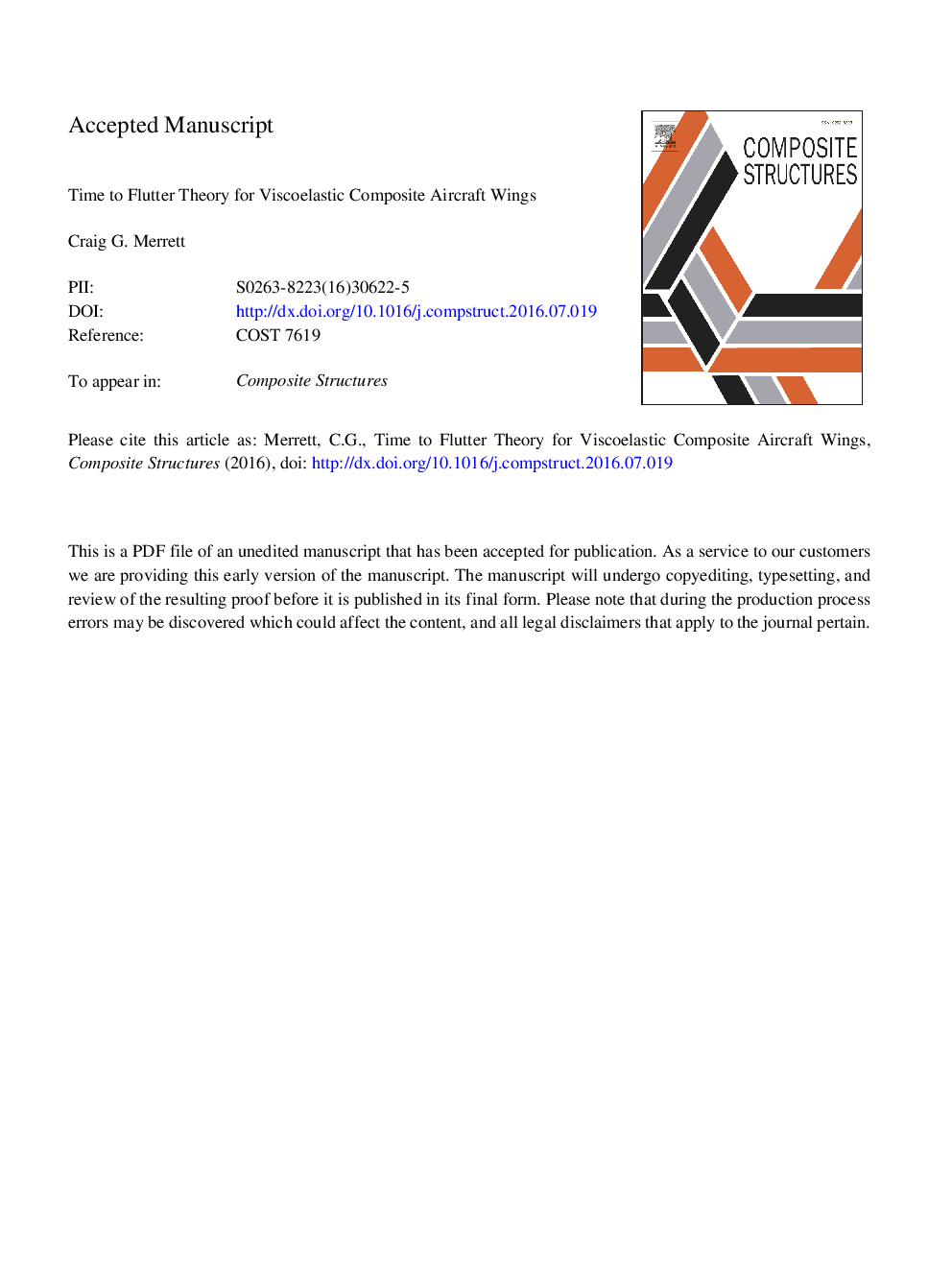| Article ID | Journal | Published Year | Pages | File Type |
|---|---|---|---|---|
| 6705171 | Composite Structures | 2016 | 67 Pages |
Abstract
Many general aviation aircraft and commercial aviation aircraft are manufactured from high-polymer composite materials. The increasing use of polymer composite materials adds a time dimension to existing flutter analyses of an aircraft wing. Polymer composites exhibit viscoelastic material behaviors such as energy dissipation and a memory effect that influence the physical response of a wing. The proposed theory, derived from Lyapunov stability principles, predicts the time component of flutter, and provides a set of conditions for viscoelastic structural instabilities in general. The addition of the load history in the stability analysis of a structure is a significant change compared to elastic materials, and no standards exist for assessing the lifetime stability of a viscoelastic structure. Rigorous comparisons to the Goland wing, wings with and without stores, and a flying wing illustrate the practical applications of the theory during aircraft design. Further, the theory predicts the time to flutter of each wing for a range of representative viscoelastic materials and flow conditions. The existence and prediction of the time to flutter is the key, original contribution of the theory because no other method is available to predict the time to flutter.
Related Topics
Physical Sciences and Engineering
Engineering
Civil and Structural Engineering
Authors
Craig G. Merrett,
